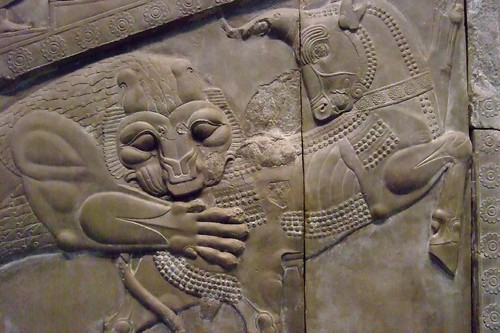
A joint Iranian-Italian archeological mission in Iran have found remains of the dwellings of some of the common people living in Persepolis. Persepolis was one of the five capitals of the Achaemenid Empire in ancient Persia. Its construction began in 520 BC under the Emperor Darius the Great. It was destroyed by fire during its occupation by the Macedonian forces of Alexander the Great two centuries later.
[Image - bas relief from the palace of Darius in Persepolis. Photo by Mary Harrsch]
In an interview with the “Tehran Times”, translated by the magazine “Archeologia Viva” (Giunti Editore), the Italian director of the mission, Pierfrancesco Callieri, professor of Archeology and Iranian Art History at the University of Bologna, affirmed that the new findings at the Persepolis site have furnished initial information on the city and on the neighborhoods where the common people lived. During the course of the excavations of the flat area at the foot of the Great Achaemenid Terrace and about 1 km from here, the team led by Professor Callieri discovered the first traces of a residential area which could correspond to the city of Mattezish, mentioned in the Elamite tablets in Persepolis. During the Achaemenid period (6th- 4th century BC), all the people working for the Imperial Court lived here, from functionaries to workers. Professor Callieri said that in one of the two excavation sites, “we localized a noteworthy structure, probably the walls of one of the building complexes of the city” instead in the other sites the archeologists localized “an artisan area with an oven and various waste ditches, surely connected to the work activities of the area as we found various ceramic pieces but also fragments of animal bones”. - Adnkronos.com
No comments:
Post a Comment